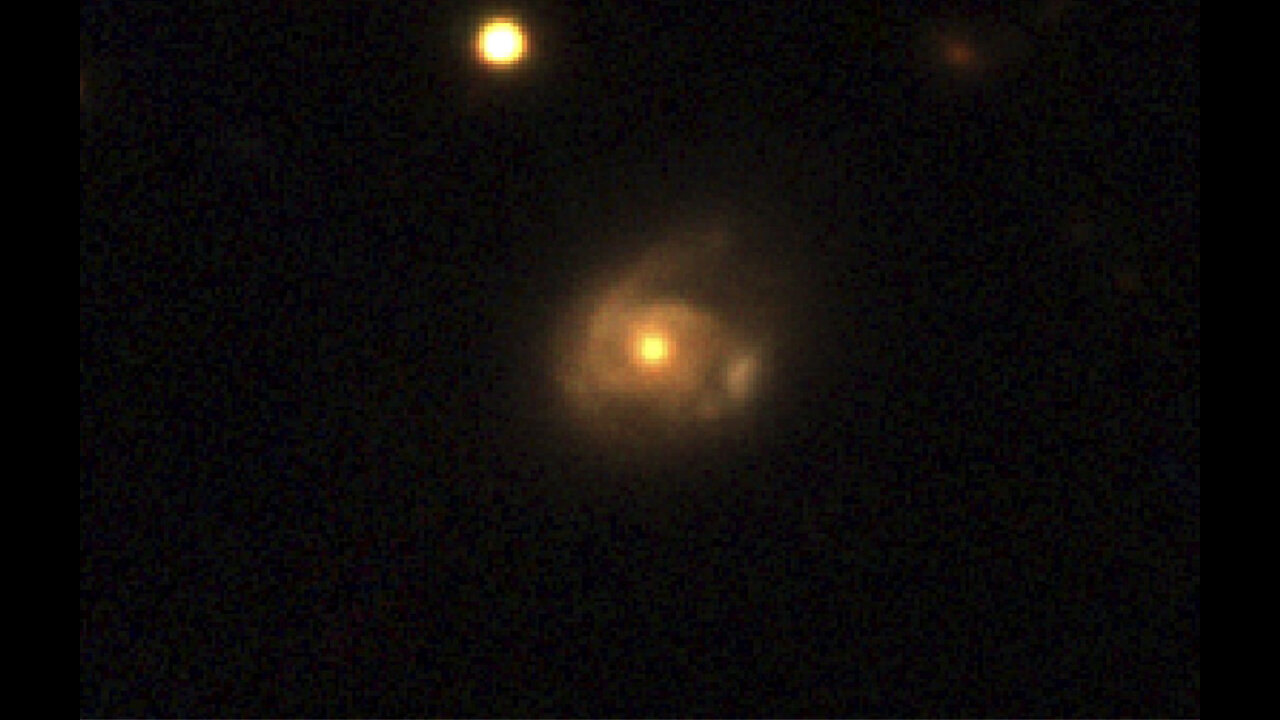Premium Only Content

| Swift Spots | a Snacking | Black Hole | Using a | New Trick |
Using NASA’s Neil Gehrels Swift Observatory, which launched in 2004, scientists have discovered a black hole in a distant galaxy repeatedly nibbling on a Sun-like star. The object heralds a new era of Swift science made possible by a novel method for analyzing data from the satellite’s X-ray Telescope (XRT).
When a star strays too close to a monster black hole, gravitational forces create intense tides that break the star apart into a stream of gas. The leading edge swings around the black hole, and the trailing edge escapes the system. These destructive episodes are called tidal disruption events. Astronomers see them as flares of multiwavelength light created when the debris collides with a disk of material already orbiting the black hole.
Recently, astronomers have been investigating variations on this phenomena, which they call partial or repeating tidal disruptions.
During these events, every time an orbiting star passes close to a black hole, the star bulges outward and sheds material, but survives. The process repeats until the star loses too much gas and finally breaks apart. The characteristics of the individual star and black hole system determine what kind of emission scientists observe, creating a wide array of behaviors to categorize.
On June 22, 2022, the XRT captured Swift J0230 for the first time. It lit up in a galaxy around 500 million light-years away in the northern constellation Triangulum. Swift’s XRT has observed nine additional outbursts from the same location roughly every few weeks.
Scientists propose that Swift J0230 is a repeating tidal disruption of a Sun-like star orbiting a black hole with over 200,000 times the Sun’s mass. They estimate the star loses around three Earth masses of material on each pass. This system provides a bridge between other types of suspected repeating disruptions and allowed scientists to model how interactions between different star types and black hole sizes affect what we observe.
Swift J0230’s discovery was possible thanks to a new, automated search of XRT observations called the Swift X-ray Transient Detector.
After the instrument observes a portion of the sky, the data is transmitted to the ground, and the program compares it to previous XRT snapshots of the same spot. If that portion of the X-ray sky has changed, scientists get an alert. In the case of Swift J0230, astronomers were able to rapidly coordinate additional observations of the region.
-
 5:43
5:43
GritsGG
1 day agoBest Way To Get Specialist EVERY Game!
28.6K2 -
 LIVE
LIVE
Lofi Girl
2 years agoSynthwave Radio 🌌 - beats to chill/game to
300 watching -
 6:48
6:48
Buddy Brown
12 hours ago $12.02 earnedWatch What Happens When you Set up a "Charlie Tent" at HBCU! | Buddy Brown
159K66 -
 3:02:05
3:02:05
FreshandFit
13 hours agoObese Black Girls Got Triggered Over THIS...
115K98 -
 2:07:44
2:07:44
Inverted World Live
9 hours agoPentagon Says it Solved UFO Cases, Tyler Robinson "Roommate" Missing | Ep. 113
47.5K18 -
 2:30:00
2:30:00
Badlands Media
15 hours agoDevolution Power Hour Ep. 392: Psyops, Paper Tigers, and the Path to Sovereignty
97.3K21 -
 3:02:08
3:02:08
TimcastIRL
9 hours agoLeftist Terror Attack On ICE In Dallas, Jimmy Kimmel Doubles Down Insulting MAGA | Timcast IRL
353K142 -
 1:17:35
1:17:35
Man in America
14 hours agoIs Starlink RIPPING Us Apart from the Inside Out? w/ Cory Hillis
56.4K19 -
 55:40
55:40
TheSaltyCracker
8 hours agoIdiots Chug Tylenol PT2 ReeEEStream 9-24-25
122K229 -
 5:55:01
5:55:01
Akademiks
9 hours agoYoung Thug Dissing YFN Lucci. Ready to Go back to Jail. Offset vs Cardi b
72.3K4